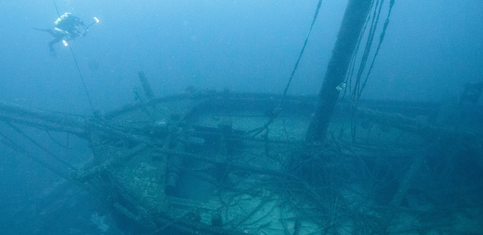When Elias Stadiatis descended into the indigo-blue water, he had a normal day of searching for sponges ahead of him. Weighed down in a copper diving suit, surrounded by a tangle of breathing tubes, Stadiatis eventually reached the seafloor. As he squinted into the dim, he took in a haunting scene: all around were the fuzzy outlines of human body parts. As he surfaced in a pool of bubbles, he frantically informed the captain he’d found a heap of rotting corpses.
It was the spring of 1900, and Stadiatis had accidentally discovered the Antikythera shipwreck – the remains of a Roman cargo vessel that had sunk more than two millennia earlier. It soon became clear that it was not teeming with cadavers, as it first seemed, but artworks – marble sculptures and bronze statues, seasoned by thousands of years among algae, sponges and fish.
More than 100 years on, the relics at Antikythera, found off the coast of a Greek island on the edge of the Aegean Sea, are still captivating the public. But there are plenty of submerged wonders still waiting to be discovered.
California Bill would punish parents who don’t “affirm” their child’s “gender identity”?
Take the recent Unesco expedition to Skerki Bank, a particularly treacherous shallow reef that links the eastern and western Mediterranean. It has been heavily used for thousands of years – and in that time, it has claimed hundreds of ships. Using multibeam sonar and underwater robots, a team of scientists from eight countries mapped the seafloor in the region. This week, they announced the discovery of three new wrecks: the ghostly remains of boats dating to the 1st Century BC, 2nd Century AD, and 19th or 20th Century.
Read more: BBC




































